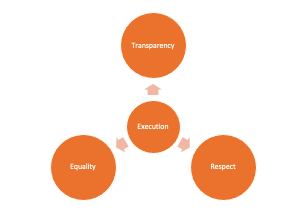Maggie Jia

1. Businesses and companies in China have been served all kinds of various challenges recently, such as dramatic changes in the economic situation, strict COVID-19 measures, self-development bottlenecks and so forth. In order to cope with various challenges and adapt to these, either actively or passively, enterprises need to constantly adjust their structures, ranging from individual personnel changes to changes in the business direction;
2. Talking about structure adjustment, it usually involves the adjustment of employment positions and the handling of employee relations. At the same time, the handling of such problems will directly affect or even determine the success of the restructured company. In the event a restructuring is needed or inevitable, how should enterprise managers and HR departments properly handle employee relations and achieve a smooth transition in a cost-effective and legally sustained manner? Let us give you a few practical methods that can lead to a successful restructuring.
Part 1
Be Prepared!

Do not fight an unprepared battle: the most important preparation is to know your employees. How to get to know your employees? Here is a framework (figure 1):

- Collect your employees’ information.
Every little piece of personal information of every employee, including his/her age, family status and health situation; - Conduct a compliance review of your employment situation.
Especially cover the payment of social security and housing allowances. Due to some historical reasons and situations, many companies may have a history of short payment or insufficient payment of social security and housing allowances. This could potentially lead to a lot of troubles during a company restructuring, because the resistance and conflict between employees and the company would already be enhanced during a restructuring. Therefore, a compliance audit is extremely important; - Pay attention to the historical employment development of the company.
In particular, be aware of any labor disputes, strikes, collective events, etc. Please make sure all these conflicts have been resolved before the start of the restructuring. Otherwise, you will face an even more complicated battlefield.
It might seem like there are so many things to do, but collecting information is not that difficult. Based on the comprehensive and completed information you have; you will be able to design a detailed plan and make your budget plan.
Part 2
Execution

Once you are fully prepared, you will have already achieved more than half of the success of the restructuring. Now, we would like to give you 3 practical tips (figure 2) regarding the relationship with the employees during the execution of restructuring.

1. Transparency
There is a Chinese proverb “疏胜于堵”, meaning “Dredging is better than blocking”.
This always happens when a company decides to start a restructuring: management tends to keep the restructuring confidential because they are afraid that when the decision of restructuring is being disclosed, especially news regarding dismissals and relocations, there will be a panic amongst the employees. Therefore they tend to hide everything for as long as possible.
Any information related to the employees during the restructuring shall be disclosed publicly, so that you can lead the employees to the direction you want them to go. Of course, it is important for management to decide what to disclose, how to disclose it and when to disclose it. The same can be said for disclosing at a poor time which may cause some panic or trouble, but try not to hide information because it can only make the situation worse if the employees learn relevant information from sources other than the company.
2. Equality
There is another Chinese proverb about a traditional culture: Chinese people do not worry about the lesser distribution of wealth but worry about the uneven distribution of wealth (不换寡而患不均). This means that you should treat every employee in the same situation with the same standards.
In many cases, management wants to provide a better package to more valued employees or employees in higher positions, but ignore the potential consequences. Such inequality always causes collective activities or resistance. Therefore, when you make a plan, you should make sure that the same standards apply to all the employees.
Imagine a company decided to be relocated to another location, and in order to keep those employees who will have to work at the new location, the manager said that he would like to give more transportation allowance to white collar workers than to blue collar workers. Why? Because he believes that most of the blue collar workers would choose to take the shuttle bus arranged by the company, but the white collar workers would prefer to use their own car or take public transportation, which will cost more than taking the shuttle bus. If this plan was finally implemented, you can only imagine the amount of troubles that will follow, because the blue collar workers would definitely believe that they are discriminated against due to the lower transportation allowance.
Therefore, please ensure that under the same situation, every employee shall get the same treatment.
3. Respect
Respect includes the respect of culture and respect of everything. But here in our case, it is more important to respect every reasonable need of your employees.
During a restructuring, each employee will suffer differently. Everyone may encounter different challenges and may have different requests. Generally, most of them will not raise questions and few of them may raise requests. Don’t be afraid of such requests or questions, just show your respect and your kindness to the employees and their specific situations.
Conclusion
Be well prepared before you start the restructuring and remember the DaWo frameworks as your guide during the whole execution of the restructuring. Follow our channel, know your company, know your employee, and you will be successful in company restructuring(s)!


